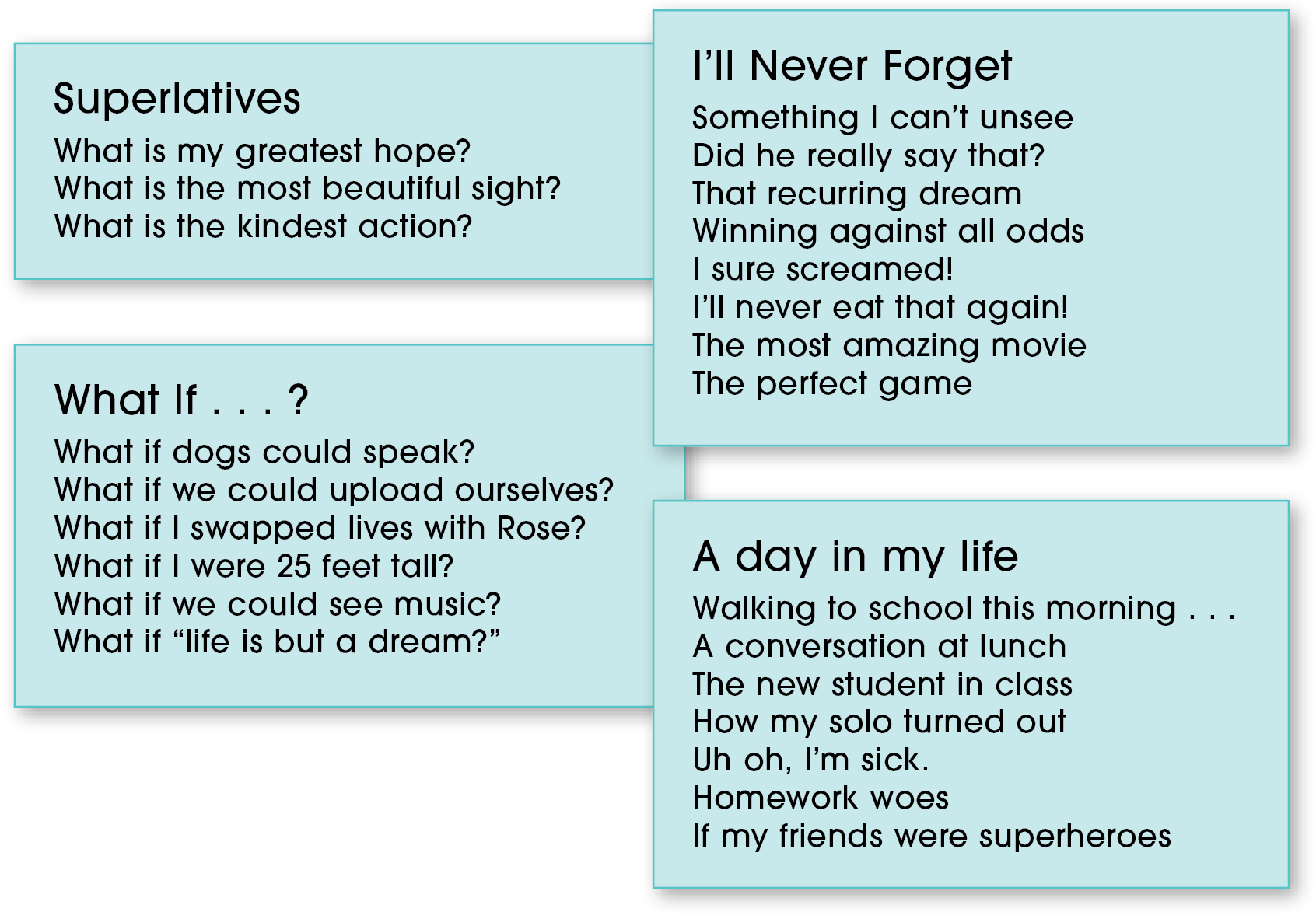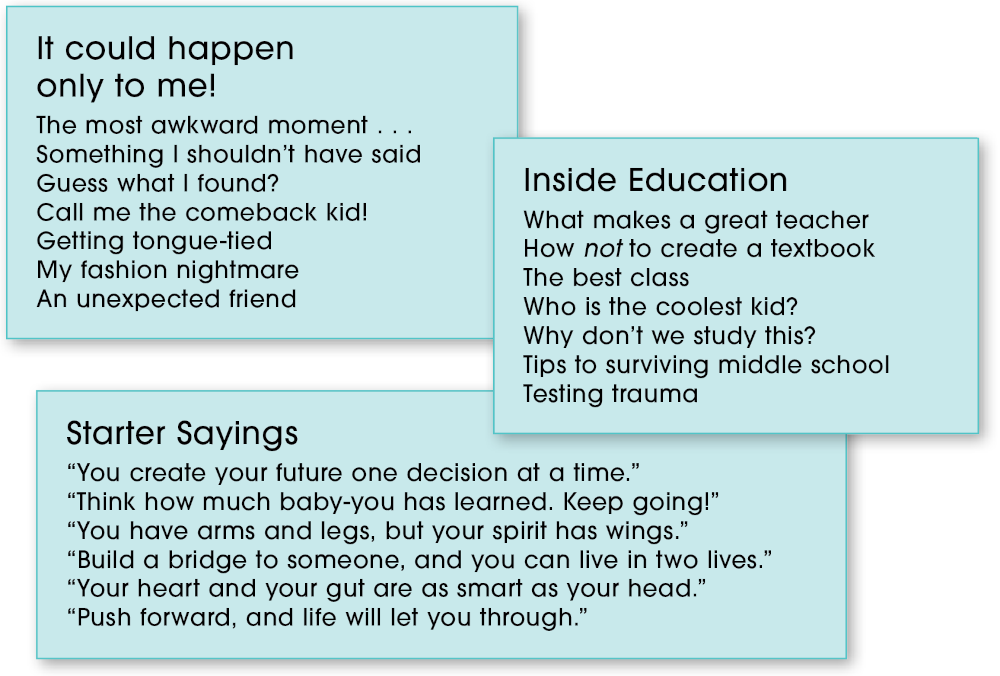WOC 128
Page 128
WOC 129
Page 129
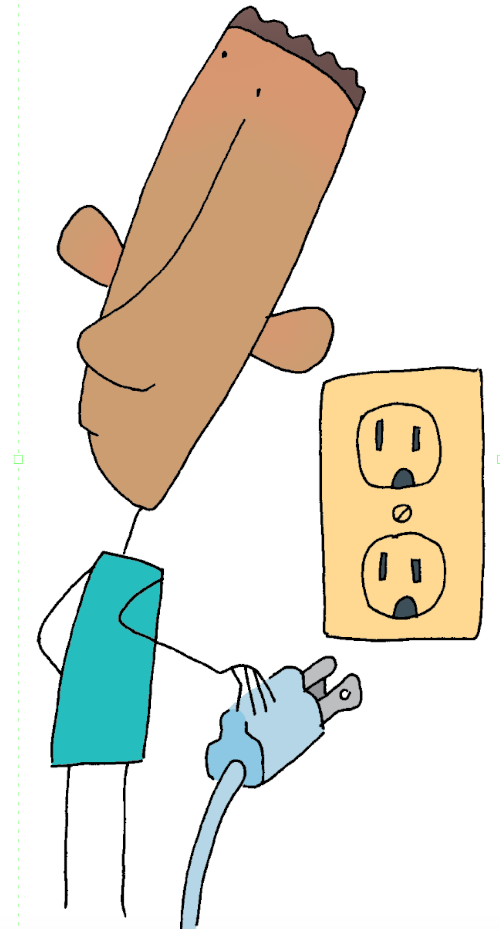
Writing in Journals
Thoughts, feelings, memories, hopes, dreams, fears, questions, wonders—these tumble ceaselessly through your mind. There’s so much energy there. You can plug into it by writing in a journal.
Joan Didion said, “I write entirely to find out what I’m thinking, what I’m looking at, what I see, and what it means. What I want and what I fear.” Journal writing lets you find out what you think. As a result, it improves mood and mental health and even speeds physical healing.
Journaling has one other benefit. It increases your writing fluency—your ability to write a lot in a short amount of time. That means, all your formal writing assignments will come more easily. Put simply, journal writing makes you a better writer.
What’s Ahead
WOC 130
Page 130
Journal Writing
Personal journals are “for your eyes only,” but you can also write in an online journal or blog. Use your journal to reflect on your days and explore the inner landscape of your thoughts. To get started, follow these steps:
1. Collect the proper tools.
All you need is a notebook and a pen or pencil, or you can write on a computer—in a private journal or a blog. (See page 142 for a sample blog post.)
2. Choose a regular time and place to write.
If you’re a morning person, write when you get up. If you stay up late, write before going to bed. Also, find a comfortable place to write—a place where you can concentrate.
3. Write continuously for a set time.
Try to write for at least 5–10 minutes. Write as freely as you can. If you plan to post your writing in a blog, check it for clarity and correctness before posting.
4. Write about ideas and feelings that are important to you.

Here are some topics to get you started: (Also see page 134.)
■ daily events
■ important events (personal or global)
■ interesting things you see and hear
■ personal thoughts and feelings
■ books you’ve read
■ ideas for stories and poems
■ subjects you are studying
5. Keep track of your writing.
Date your journal entries and read them from time to time. Mark ideas that you would like to write more about in the future.
Helpful Hint
If you regularly write for the same amount of time—let’s say 10 minutes—count the number of words you produce. The number should increase over time, which means you are gaining fluency as a writer.
WOC 131
Page 131
Journal Entry
Here is a journal entry written by student Juan Reyes about his favorite things. He dates the entry, and his language is casual.
Journal Entry
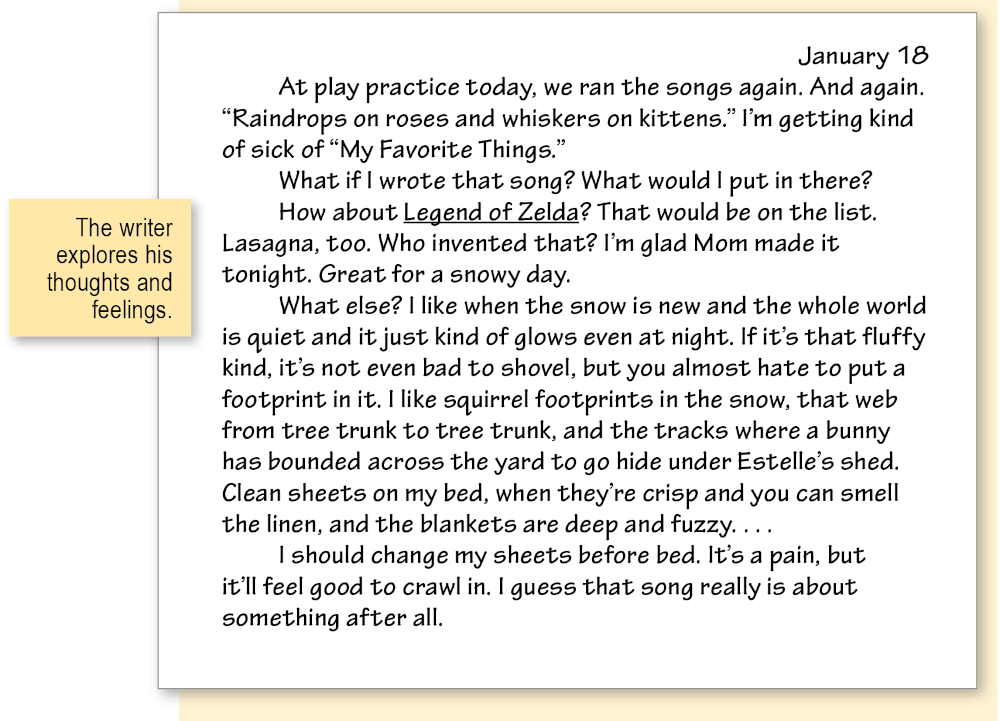
A Closer Look at Journal Writing
Journal writing works best when you reflect on your experiences and feelings. Reflecting means thinking carefully about something. Asking questions and wondering are two ways to reflect.
Ask questions
As you write, ask yourself questions: What was fun or interesting about this experience? How do I feel about it now? Why does this matter to me? Then try to discover some answers.
Wonder
Think about what you have learned from an experience. Compare it to other experiences you’ve had. Let yourself wonder what you could have done differently, or predict what the experience will mean to you in the future.
WOC 132
Page 132
Types of Journals
You may want to keep other types of journals as well.
■ Diary
A diary is a private personal journal. It contains not just a record of daily events but also your innermost thoughts and feelings about them. A diary often discusses personal relationships and concerns. (You probably wouldn’t share diary entries on a blog.)
■ Dialogue Journal
In a dialogue journal, two individuals (you and a friend, or parent, or teacher) create a written conversation. For example, you might have a lengthy text conversation, or you could both contribute to the same Google doc. A dialogue journal can help you get to know someone better, work through a problem, or share a common interest.
■ Learning Log
A learning log (classroom journal) lets you explore concepts, facts, and ideas covered in a specific class. Learning logs are very helpful in math and science classes, especially when the material is difficult or challenging. (See pages 135–138.)
■ Reader Response Journal
A reader response journal is a kind of learning log. In it you write about your feelings and reactions to the books they are reading.
■ Specialized Journal
When writers devote a journal to a specific event or experience, they are writing in a specialized journal. They may want to explore their thoughts and feelings while at summer camp, while participating in a team sport, while acting in a school production, or while working on a group project.
■ Travel Log
In a travel log, writers simply explore their thoughts and feelings while vacationing or traveling. It’s a way to preserve memories and to pass the time while riding in a car or waiting to board a plane.
WOC 133
Page 133
Response Journal Entries
These two entries come from different parts of a response journal. The first entry is a response to fiction, and the second to nonfiction.
Response to Fiction
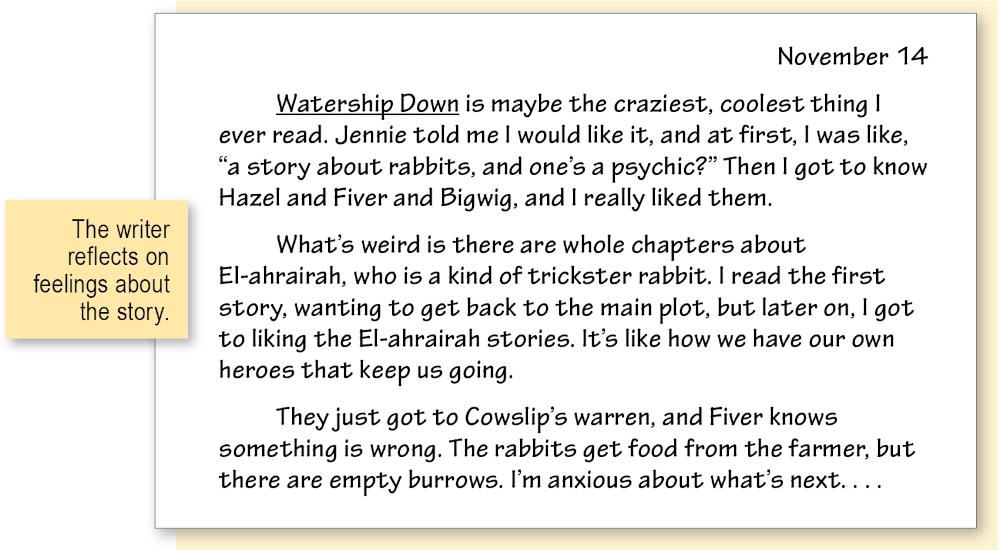
Response to Nonfiction
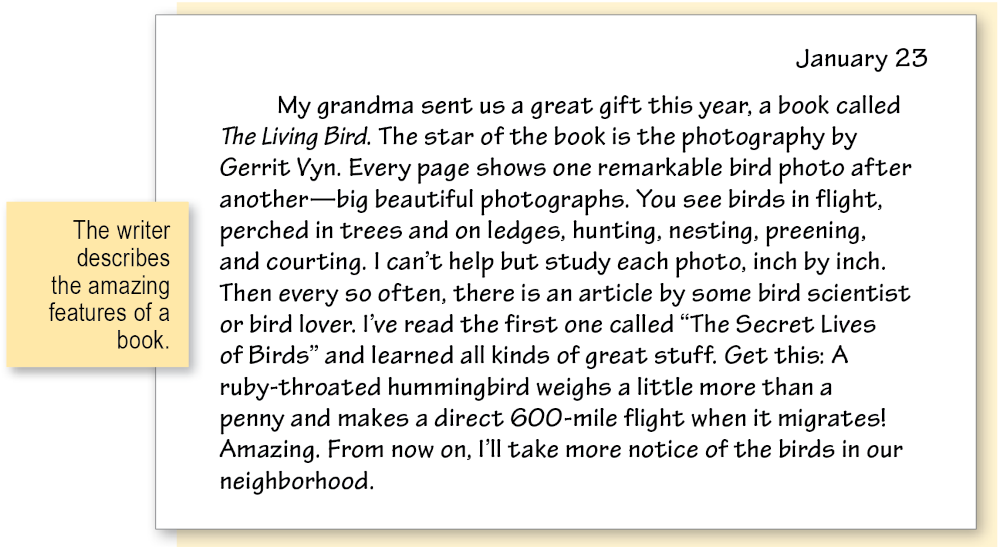
WOC 134
Page 134
Personal-Writing Topics
Think of the topics listed on this page as starting points for journal writing as well as writing blogs and personal narratives.
